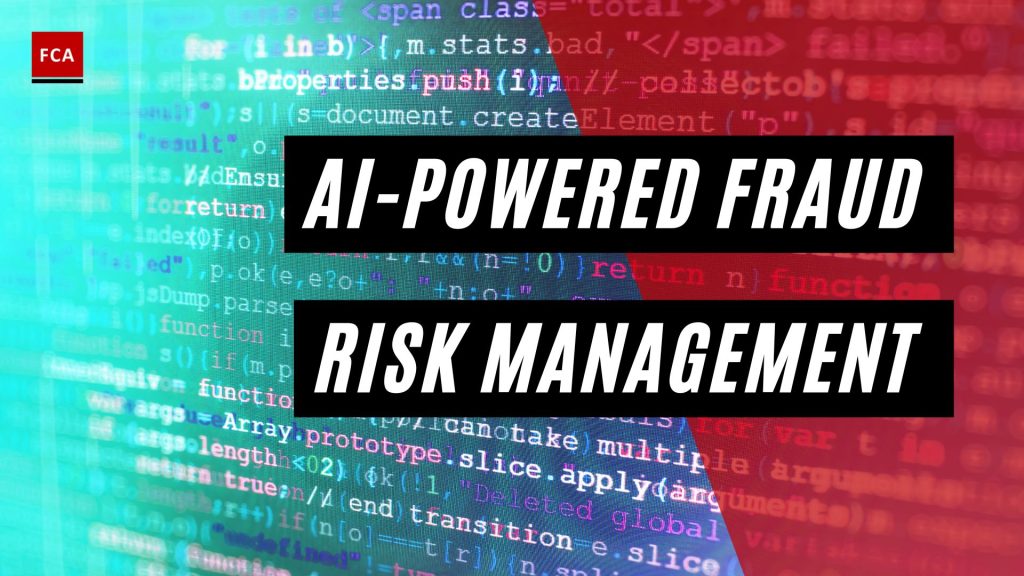AI-powered fraud risk management has emerged as an indispensable tool in the contemporary digital era, acting as a bulwark against increasingly complex fraudulent activities. This innovative approach harnesses artificial intelligence (AI) and machine learning to provide real-time, sophisticated analysis of a multitude of transactions, flagging potential risks and anomalies that would otherwise slip under the radar.
By integrating anti-financial crime measures and gleaning meaningful insights from data, AI-enabled systems deliver accurate, predictive assessments that aid in fraud detection and prevention. Ultimately, the incorporation of AI into fraud risk management not only enhances organizational resilience but also bolsters confidence among stakeholders, strengthening the foundation of trust essential to any business’s success in today’s dynamic and challenging economic landscape.
Nowadays organizations are faced with multiple threats and frauds, which threaten the entire business and operational units, processes, and systems. Due to the maturity of digitalization, the fraudulent challenges and risks are more complicated than what organizations had previously faced. To manage and respond to fraud risk effectively, organizations may need an integrated view of the fraud risk landscape and know how to identify and manage such fraud risks.
By implementing technology and tools, such as artificial intelligence (AI), the organization may achieve the effective management of its fraud risk landscape, and improve the overall process of value creation for the customers and stakeholders.

AI-Powered Fraud Risk Management: Leveraging Technology for Integrated Fraud Risk Management
The use of technology, such as artificial intelligence (AI), enables real-time identification and analysis of available data and transactions initiated from different sources and channels, such as product delivery channels, such as automated teller machines (ATMs), internet banking, mobile banking, through vendor channels, etc.
Technology enables efficient integration of measures, such as anti-financial crime, anti-money laundering, and anti-fraud measures, and provides tools to break down the data points into more meaningful forms, which helps in predicting the patterns and links between various financial transactions. There are possibilities that criminals use different locations and delivery channels of an institution, to perform various financial crimes, to trick the financial system of the institution, the avoidance and management of which is possible through the effective utilization of integrated technology-based anti-financial crime measures.
Using AI and machine learning capabilities, helps the fraud risk management team to gather the transaction data in a real-time manner, to predict the apparent and hidden links and patterns amongst various financial transactions.
For example, criminals may use Internet banking, and different ATMs installed at various branches of the financial institution, to perform fraudulent transactions on a particular day. The use of AI and machine learning would enable the identification of similar kinds of financial transaction attempts of the fraudsters or criminals, and provide meaningful data to the fraud risk management to predict the fraud incident that occurred or the risk of occurrence of frauds.
Similarly, cross-border transactions occur in large numbers during the day, and conventional systems may not be able to identify the meaningful links and patterns, therefore the use of AI for cross border transactions data analysis helps in the real-time identification of fraudulent attempts initiated by unknown and unverified users from international locations or jurisdictions.

The use of AI and machine learning helps management in avoiding the fraudulent reporting of transactions in financial statements. AI and machine learning follows the rules and predict the accuracy of financial data to be used to prepare true and fair financial statements free from fraud and material misstatements.
For example, AI may predict the compliance of international financial reporting standards requirements, necessary to show the disclosure in the financial statements. Similarly, AI and anomaly detection protocols can early check and detect the accuracy of financial transactions by comparing them with authorized financial limits and data authorization rights granted to authorized employees. Capabilities to early detect and analyze fraud attempts enables correcting the anomalies in a real-time and presenting true and fair financial statements.
Effective technology governance and use of AI tools, help in effective risk reporting, and real-time monitoring by enabling risk consciousness and organizational resiliency by the fraud risk appetite set to identify, assess and manage the fraud risk. The fraud risk assessment and analysis are then linked to the real-time use of relevant data points, for the development of risk mitigation and controls strategy, and development measures to be prepared for emergencies.
Technology helps in the implementation of close attention and vigilance on the part of the organization and customers, which works as the best fraud attempts detection deterrence. The use of technology tools also helps in the development of relevant fraud risk management policies and procedures, regulatory compliance, ethical conduct, new employee awareness, and training.
Financial institutions can preserve and enable security measures for the safety, integrity, and authenticity of financial transactions by employing various real-time scrutiny protocols: cryptographic check hurdles. In addition, the financial institutions may rotate the services of the persons working on the sensitive data, keep strict vigilance of the financial transactions, update the AI technology employed periodically, and engage more than one person in large-value transactions.
The third line of defense, internal audit, can continue to effectively audit the controls implemented for the detection and prevention of frauds, and scams and suggest technological proficiencies needed to further improve the fraud risk management process across the institution.

Final Thoughts
In the face of increasing threats and complexities brought by digitalization, harnessing artificial intelligence (AI) and machine learning for fraud risk management has become more crucial than ever. They equip organizations with robust capabilities for real-time detection, analysis, and prediction of potential fraudulent activities, thereby fostering operational resilience. By facilitating efficient integration of anti-financial crime measures, offering meaningful insights from diverse financial transactions, and promoting accurate financial reporting, these technologies not only enable organizations to stay ahead of fraudsters but also improve value creation for stakeholders.
With rigorous technology governance and effective risk reporting, AI can be a game-changer, fostering a culture of risk consciousness and helping organizations be prepared for emergencies, ensuring the security and integrity of financial transactions, and enhancing overall business resilience in today’s volatile landscape.









